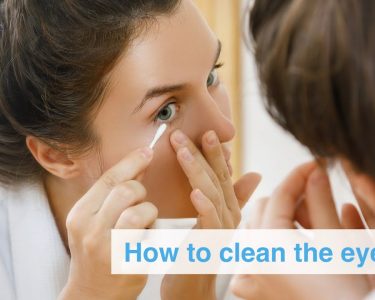Blepharitis, a common inflammatory condition affecting the eyelids, can cause discomfort, redness, and irritation. For those who have struggled with recurring symptoms, advances in medical technology and treatments offer new hope. This article explores the latest treatment for blepharitis, helping you understand how to manage this condition effectively.
What is Blepharitis?
Blepharitis is a common condition characterized by inflammation of the eyelids, particularly where the eyelashes grow. It can affect one or both eyes and often occurs due to bacterial infections, clogged oil glands, or skin conditions like dandruff or rosacea. Blepharitis is not contagious, but it can be chronic, requiring ongoing management.
Symptoms of Blepharitis
- Red, swollen, or itchy eyelids
- Crusty flakes around the eyelashes, resembling dandruff
- A gritty or burning sensation in the eyes
- Increased tear production or dry eyes
- Sensitivity to light
- Blurred vision (in severe cases)
Causes of Blepharitis
- Bacterial Infections: Staphylococcus bacteria are a common culprit.
- Malfunctioning Oil Glands: Meibomian gland dysfunction can lead to blocked oil ducts.
- Skin Conditions: Conditions like seborrheic dermatitis, rosacea, or eczema may contribute.
- Allergies: Allergic reactions to eye makeup or contact lenses can trigger symptoms.
Types of Blepharitis
- Anterior Blepharitis: Affects the outer edge of the eyelid where the eyelashes attach.
- Posterior Blepharitis: Involves the inner edge of the eyelid, near the eye’s surface, and is linked to oil gland dysfunction.
Traditional Treatments
Traditional remedies have focused on:
- Warm compresses to loosen debris and open clogged glands.
- Eyelid scrubs using diluted baby shampoo or specialized cleaning solutions.
- Topical antibiotics or steroids to address bacterial infections and inflammation.
While these methods are effective for many, they may not fully resolve the condition, especially in chronic or severe cases. Fortunately, new treatment options have emerged.
Related Articles: Natural Remedies for Blepharitis Affecting the Eyelids
Latest Treatment for Blepharitis
Blepharitis, a chronic condition causing inflammation of the eyelids, can lead to discomfort, redness, and crusting around the eyelashes. Despite being a common issue, effective treatments have been challenging. Fortunately, recent advancements have brought innovative solutions, improving symptom management and targeting underlying causes.
FDA-Approved Lotilaner Ophthalmic Solution (XDEMVY)
A groundbreaking treatment for Demodex blepharitis, lotilaner ophthalmic solution 0.25% (brand name XDEMVY), received FDA approval in 2023. It specifically targets Demodex mites, a significant cause of blepharitis.
How It Works
Lotilaner disrupts the nervous system of Demodex mites, eradicating them efficiently. It is prescribed as twice-daily drops over a six-week period. Clinical trials (SATURN-1 and SATURN-2) demonstrated its ability to significantly reduce symptoms like:
- Redness
- Itchiness
- Collarettes (crusty debris around eyelashes)
Patients experienced relief with minimal side effects, marking it as a superior option compared to older methods focused on symptom control rather than the root cause.
Related Articles: How to Cure Blepharitis Fast and Naturally with Herbal Remedies
Other Advancements in Blepharitis Treatment
1. Intense Pulsed Light (IPL) Therapy
Originally developed for skin conditions, IPL has shown effectiveness in treating meibomian gland dysfunction (MGD), a common contributor to blepharitis. IPL uses light pulses to reduce inflammation and improve gland functionality, providing longer-term relief.
2. BlephEx and ZEST
These in-office procedures involve the mechanical cleaning of the eyelid margin.
- BlephEx: Removes debris and biofilm, reducing bacterial overgrowth.
- ZEST (Zocular Eyelid System Treatment): Uses a gel-based cleaning agent to dissolve biofilm and reduce Demodex activity.
Both methods offer immediate relief and can complement other treatments.
Traditional Approaches and Maintenance
While new therapies are exciting, traditional treatments remain important, especially for maintenance. These include:
Related Articles: 10 Natural Treatment for Blepharitis
- Warm Compresses: Loosen blockages in meibomian glands.
- Eyelid Hygiene: Cleansers containing tea tree oil or hypochlorous acid help reduce bacteria and Demodex mites.
- Artificial Tears: Address dryness, a common symptom of blepharitis.
The Future of Blepharitis Management
With the introduction of XDEMVY and enhanced procedural treatments, the outlook for blepharitis patients has significantly improved. The ability to target the condition’s underlying causes rather than just managing symptoms marks a paradigm shift in care.
If you suspect blepharitis or experience persistent eyelid irritation, consult an eye care specialist. They can recommend the most suitable treatment based on your condition’s severity and cause.
For the latest updates, refer to trusted sources such as the American Academy of Ophthalmology or Modern Optometry
How to Choose the Right Treatment
The choice of treatment depends on the underlying cause of your blepharitis and its severity. Consult an eye care professional for a proper diagnosis and to discuss the best options. For some, a combination of traditional methods and cutting-edge treatments may offer the most relief.
Lifestyle Tips for Blepharitis Management
In addition to medical treatments, maintaining good eyelid hygiene is essential:
- Clean your eyelids daily with recommended solutions.
- Avoid using expired or old eye makeup.
- Manage conditions like rosacea or seborrheic dermatitis, as they can exacerbate symptoms.
Conclusion
The latest treatment for blepharitis brings exciting possibilities for those struggling with this chronic condition. Innovations like IPL therapy, LipiFlow, BlephEx, and new medications like Xdemvy offer targeted relief and improved outcomes. By staying informed and consulting with your eye care provider, you can find the best solution to keep your eyes healthy and comfortable.




